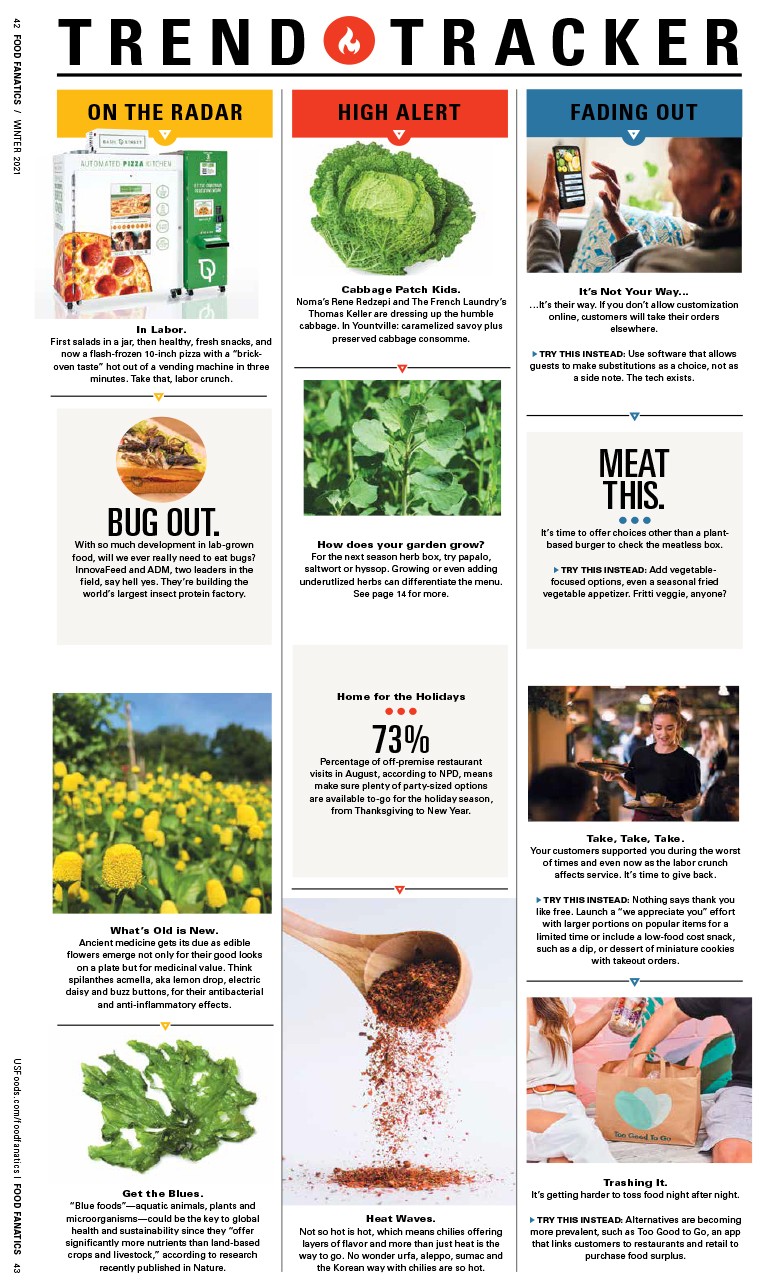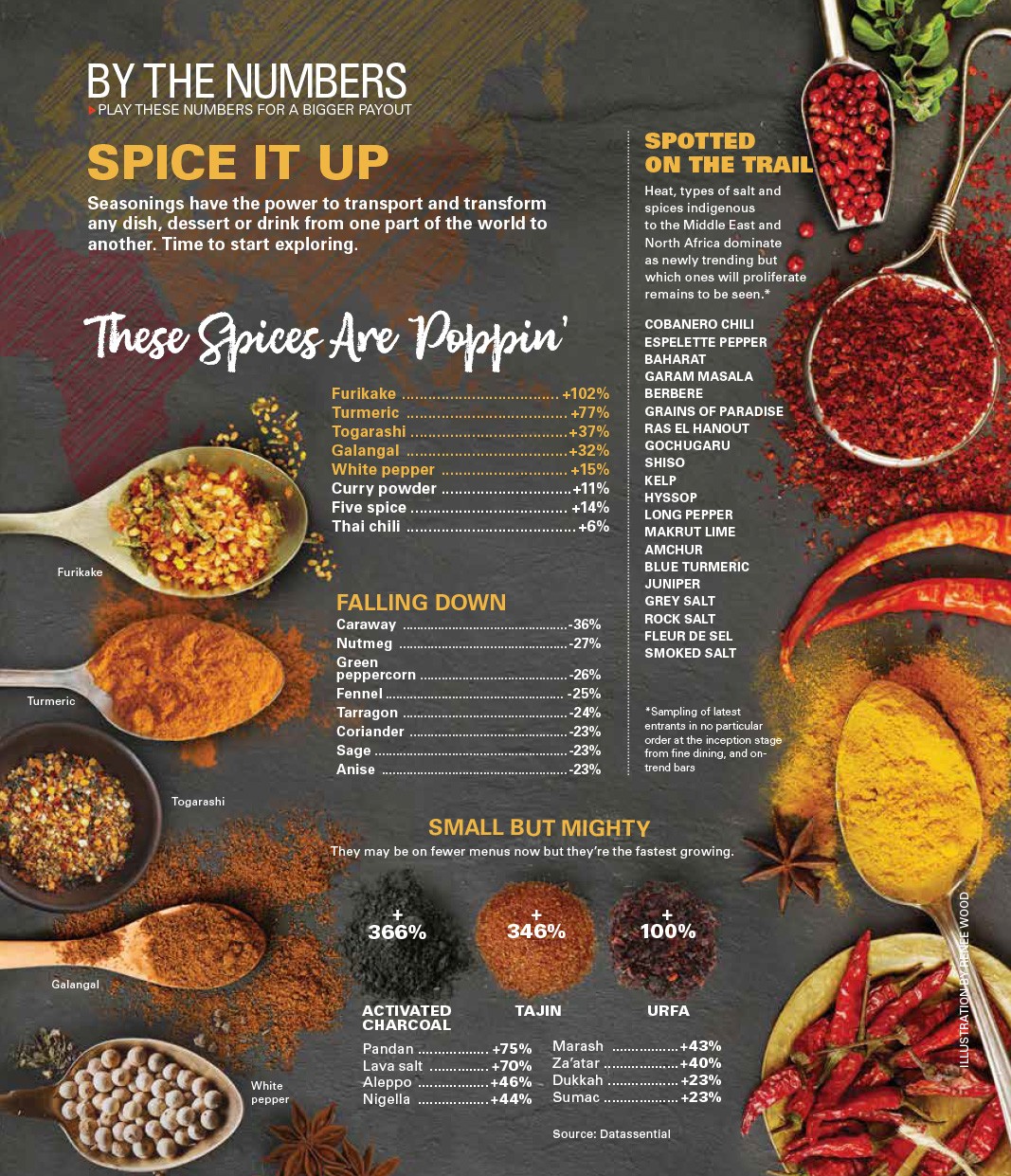Bubbling to the Top
Five new beverage trends making a splash
With a lush around every corner, alcoholic drinks are an easy sell. But enticing customers to choose your bar requires a beverage menu that truly stands out. Grab their attention with these beverage trends:
1. Spiked Nostalgia
Kid favorites such as floats, milkshakes and egg creams get adult flair with a splash of liquor. Boozy milkshakes go hand-in-hand with burgers at Atlanta’s Grindhouse Killer Burgers, which offers a Big Lebowski-inspired White Russian milkshake called The Duderino ($8.50). New York City’s Evelyn Drinkery serves contemporary takes on classic egg creams, including the London Cream, a concoction of Earl Grey milk, bergamot, honey, lemon, Bombay dry gin and seltzer ($9). While Evelyn’s millennial demographic isn’t very familiar with the egg creams of yesteryear, partner Jared Shepard says they’re great showpieces.
“People aren’t going to drink six egg creams, but they do like to talk about them,” he says.
2. Catch Barflies With Drinking Vinegars
With the popularity of seasonally driven bar menus, many bartenders are stocking their stations with shrubs, drinks made by the Colonial-era technique of cooking sweetened vinegar with fruit and letting it age. Basically anything can be made into a shrub, from the rosemary-thyme vinegar in the McTwist cocktail ($10) at Joule Restaurant in Seattle to rhubarb vinegar in the Simple Pleasure cocktail ($9) at Minneapolis bar Parlour.
Mixologist Lynn House, who features a blackberry-basil shrub at Blackbird in Chicago, says shrubs maximize seasonal fruits and herbs. “We are seeing a resurgence of shrubs because more people are realizing their versatility,” she says. “Shrubs also bring a wonderfully unique flavor profile to cocktails.”
3. Boozeless Wonders
Not every customer wants to drink alcohol, but a dry customer isn’t necessarily bad for bars. Sober patrons might stay longer—and order more drinks as a result. Head bartender Kevin Dietrich of Jasper’s Corner Tap in San Francisco has had non-alcoholic drinks on the menu since opening two years ago. “I’ve always been a firm believer in offering some type of zero-octane cocktail for guests,” he says. “It’s nice to offer something outside of just a soda.” Bars like Pouring Ribbons in New York City up the ante with specialty mocktails that match the cocktail program, featuring everything from fresh honeydew and cucumber juice to orgeat (sweet, fragrant syrup).
4. How ’Bout Them Apples?
Ciders aim to be the next big thing since the craft beer movement. Artisanal cideries offer a spectrum of nuanced flavors and techniques for pairing, from dry hopping to aging in French oak and bourbon barrels. An added bonus: most ciders are gluten-free, a selling point for those with an intolerance.
Co-owner Benjamin Sandler of Queens Kickshaw in Queens, N.Y., says the number of ciders on its beverage list tripled over the past two years, from around 10 to 30. At Terroir’s five locations in New York City, the cider program has grown steadily over the past couple years as well. “It’s still a small movement, but cider is growing 15 to 20 percent per year,” says David Flaherty, Terroir’s beer and spirits director. “If you want to be seen as having a great beverage program, you can’t leave cider out anymore.”
5. Big Things in Small Batches
Like wine and craft beer nerds, drinkers are seeking diverse spirits from small-batch distilleries. Some bars and restaurants are offer small specialty lists, such as Nopalitoin San Francisco, which features a select mezcal and tequila collection just shy of 30 bottles. Bistro Rollin in Pelham, N.Y., takes the local approach with about 20 boutique gins, bourbons, rums and moonshines from Upstate New York. “In some ways, (small-batch liquors) are an extension of an interesting wine list,” says Paul Bratone, Bistro Rollin’s owner. “Diners want ‘local,’ and some want a new challenge. From the restaurant’s standpoint, it’s a minimal amount of investment.”
6 Tips for Cashing in on Drink Trends1. Start small, focusing on one trend before adding another. 2. Bartenders know what guests like, so solicit their input. 3. Give out samples and get feedback. 4. Hone recipes and make them right every time. 5. Educate staff so they can help upsell. 6. Tell your customers about new drink programs. Use your website and promote through social media and other marketing channels. |



